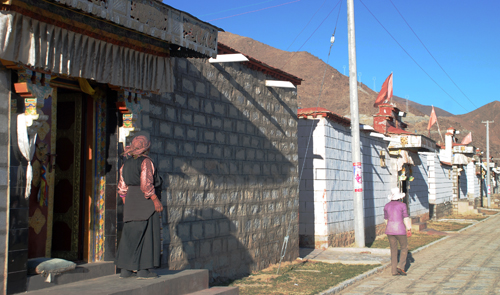Another 312,000 farmers and herders from 57,800 families moved from shanty homes into new solid brick houses in Tibet this year under a government-subsidized housing project aimed at improving living conditions.
 |
|
A view of the new houses in Tibet Autonomous Region. [File photo] |
"I only spent 18,000 yuan (2,647 U.S. dollars) on the construction of my new house, and the rest, totaling more than 40,000 yuan, were all granted by the government," Drolkar, a resident of the Yamda Village near Lhasa, capital of the Tibet Autonomous Region, said Friday.
Her family recently moved into the new Tibetan-style house with 120-sq-m rooms and a 100-sq-m courtyard.
Likewise, all 208 families in the village moved into new brick houses this year.
The five-year housing project was started in 2006 with a plan to build solid homes for 220,000 families. Once finished, it would mean housing for 80 percent of the region's farmers and herders by the end of 2010.
To date, 860,000 farmers and herders from 170,000 families have moved into the new houses, the government statistics show.
Tibet's gross domestic product (GDP) is expected to grow 10.1 percent year-on-year to reach 39.2 billion yuan this year, the 16th year that the plateau region has had double-digit economic growth, said Qiangba Puncog, chairman of the regional government, at an economic work conference held earlier this week.
"Farmers and herds people are the beneficiaries of the economic development," he said, citing that per capita net income for them would reach 3,170 yuan, up 13.7 percent year-on-year.

The local government has also been improving electricity, water and transportation facilities to improve living conditions in the countryside, he said.
The housing project was launched also for the sake of ecological conservation in nature reserves and for the health of the farmers and herders, local officials have said.
Health concerns have necessitated the relocation of many farmers and herders. A number of rural residents suffered from Kashin-Beck disease, also known as "big bone disease," a disabling illness of the bones and joints that leads to stunted growth and deformity of the joints. It is widely believed to be linked to local water sources and the natural environment.
(Xinhua News Agency December 27, 2008)